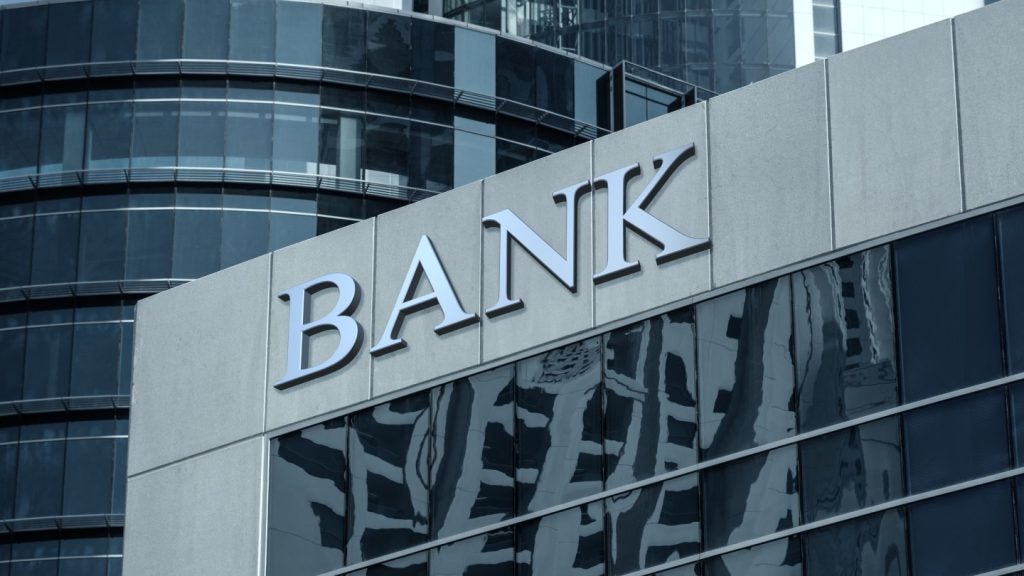After a successful 2008, in which the bank
recorded net profit of over $1 billion, Emirates NBD is continuing
its expansion by rolling out more branches and more products as
part of a drive to increase cross-sell ratios.
The group is on the verge of completing the
integration of its two constituent entities, Emirates Bank and the
National Bank of Dubai (NBD), and the lengthy merger between the
two, which first came together as Emirates NBD in October 2007, is
now nearing its final phase.
In early May Emirates moved across to Infosys’
Finacle core banking system, with NBD due to follow within the next
three months. Suvo Sarkar, general manager for retail banking at
Emirates NBD, told RBI the latest merger synergies would
give the bank an added impetus moving in to 2009.
“From being very product-led it allows us to
become much more customer-led. It allows us to do customer
segmentation based on total relationship value as well as
customer-level pricing,” said Sarkar.
“Furthermore, the CRM system allows us a full
view of the customer across all products and to transfer requests
smoothly across divisions.”
The banker remains notably optimistic about
the prospects for Emirates NBD despite the global economic slowdown
that is now making itself felt in the region. RBI’s
figures show profit growth among Middle Eastern banks has already
begun to either tail off or fall sharply, with a few notable
exceptions including National Bank of Abu Dhabi (NBAD), Qatar
National Bank and Emirates NBD itself.
How well do you really know your competitors?
Access the most comprehensive Company Profiles on the market, powered by GlobalData. Save hours of research. Gain competitive edge.

Thank you!
Your download email will arrive shortly
Not ready to buy yet? Download a free sample
We are confident about the unique quality of our Company Profiles. However, we want you to make the most beneficial decision for your business, so we offer a free sample that you can download by submitting the below form
By GlobalDataAt NBAD, a more refined customer segmentation
focus, a 40 percent rise in online banking users and a successful
‘Security and Convenience in Banking’ marketing campaign helped
push pre-tax profit in the bank’s domestic retail division up by 43
percent to $566 million.
Qatar National Bank, meanwhile, has touted a
series of technological improvements made during 2008, as well as
“significant efforts” to improve its frontline retail sales team,
as highlights of its own retail performance. The bank also
bolstered its position as a market-leader by becoming the first
financial institution in its local market to roll out an m-banking
service. Overall profit rose by 43 percent and, as with Emirates
NBD, broke the $1 billion mark for the first time.
Emirates NBD itself saw retail operating
income – before tax and impairments – more than double to $854.7
million. What is perhaps even more notable is that Sarkar remains
confident profit will continue to rise in 2009.
He added: “2008 was a fantastic year for us in
retail. We grew revenue by 50 percent and profits by 35 percent in
the first year as the merged bank working as one entity, albeit
with two different brands.
“This year in Q1 we have grown revenue by 20
percent year-on-year. We expect we will probably grow revenues at
about that level for the year as a whole, and are expecting between
10 and 20 percent growth in profit. That is our intent for
2009.”
Despite the downturn there remains the sense
the Middle East represents a vast untapped resource for financial
institutions – a sense reflected in the continued branch expansion
programmes being witnessed even among the more well-established
banks in the region.
NBAD, for example, opened 11 branches and now
has a total of 84, while National Bank of Kuwait’s rose by 6 to 69
and Saudi Arabia’s National Commercial Bank increased its network
from 264 to 275 outlets.
Islamic banks upping branches
too
All such increases can be seen as
notable given the relatively small base of branches from which most
banks in the region operate. The trend is apparent also at the
region’s Islamic banks, where there remain ambitions to build
notable physical footprints.
Noor Islamic Bank plans to open another seven
branches in 2009 to take its total to 20; Abu Dhabi Islamic Bank
says “it has not slowed down ambitious plans to extend its business
footprint in 2009”; even Dubai Islamic Bank, which reported a 31
percent fall in net income to $471 million and a similar 31 percent
fall in pre-tax retail profit to $79 million, intends to open a
further 10 branches this year and increase its network to 64.
The attractions of Islamic banking have caught
the attention of Muslims and non-Muslims alike in recent months
given the desire for increased financial prudence. Total Islamic
banking assets in Bahrain, for example, rose by 50 percent to $24.6
billion at the end of 2008, according to figures from the Central
Bank of Bahrain.
Two recent reports from ratings agencies
Moody’s and Standard & Poor’s struck a more cautionary note,
however. Moody’s cautioned against Islamic banks expanding
overseas, citing fears that “increased risk profiles may outweigh
any benefits”, while Standard & Poor’s noted that the wider
Islamic finance market was far from immune from the cataclysmic
events of 2008.
Emirates NBD’s own Islamic subsidiary,
Emirates Islamic Bank (EIB), has already opened three branches in
Dubai so far in 2009 and now has 29 in total. Sarkar said that
EIB’s parent bank was still committed to its own branch expansion
programme.
“We are relentlessly adding on to our network,
which is currently at 110 branches, despite the downturn,” he said.
“In the last six months we have added 15 branches and in the next
12 months we will add 15 more.”
The branch footprint has produced its own
surprises, not least the success of those positioned not on the
high street but rather inside Dubai’s large shopping malls.
“[The malls] are almost a destination for
people to go in themselves – not just for shopping but more
generally for leisure and entertainment and everything else,”
Sarkar said. “Initially our branches in the malls started off as
customer service centres, but increasingly we are seeing customers
buying products.
“The per square foot cost of a mall branch is
significantly higher than a high street branch, as you would
expect, but we are actually seeing payback in 18-24 months’ time,
which is far better than the norm internationally for a retail
branch.”
Those malls have also been a focal point for
Emirates NBD’s recent renewed emphasis on cross-selling retail
products.
The vast majority of banks across the Gulf
Cooperative Countries (GCC) and Israel shy away from releasing
cross-selling statistics, in part due to the relatively low
incidence of multi-product households.
“Cross-selling ratios in the Gulf for banking
on the whole are pretty low: under two products per customer,”
acknowledged Sarkar.
Mashreq Bank and NBAD are among those who are
now encouraging their retail sales forces to place more emphasis on
cross-selling, but Emirates NBD’s plans extend further still.
“We are marginally better [than the cross-sell
average] but not much better,” Sarkar added. “We have taken up this
task in earnest in the past 12 to 18 months.
“Typically, this market, and that includes
ourselves, has sold single products to customers. Over the past 12
months we have increasingly introduced bundled offers for each of
our key products; this will help us double our cross-sell ratio
from under two today to hopefully four in the next 18 months.”
Ambitious target
That is an ambitious target,
especially considering the wider economic climate. In the United
Arab Emirates (UAE), the collapse of the Dubai property market has
affected even the more cautious lenders.
Emirates NBD says that the average
loan-to-value of its mortgage portfolio is 75 percent of the
original value and 59 percent of the market value, though the bank
has now reassessed income norms for lending products and become
more selective in the segments it lends to over the past six
months.
Others have not withstood the slump so easily.
In November the UAE government announced it would merge Dubai’s two
largest home lenders, Amlak Finance and Tamweel, following the
near-collapse of both firms. An ongoing restructuring of the two
companies has yet to result in a concrete plan for their future,
but the government has previously stated it expects the new entity
to obtain a banking licence and compete for retail deposits as a
more stable means of funding.
Aside from the issue of adding one more
competitor to what is already an overcrowded banking sector, other
problems remain for the region’s financial institutions.
A research note published by UBS in April
envisaged that UAE property prices could fall by 70 percent from
peak to trough, and furthermore suggested that Dubai’s population
could fall by 10 percent over the next two years as job cuts result
in the departure of a sizeable number of the emirate’s many foreign
nationals.
Sarkar said that Emirates NBD has not yet
witnessed a trend of customers returning home following job
losses.
“Most customers will give us early warning,”
he said. “Having said that, we do work with overseas collections
agencies in most countries that customers come from. The average
recovery rates don’t tend to be very high, but it is still a
deterrent.”
Around 85 percent of UAE banking customers are
expatriates, and, perhaps mindful of the greater risk factor now
attached to this segment, Emirates NBD is now looking to provide
mortgages to UAE nationals. Sarkar said the bank believes that
property has “in spite of, and perhaps because of the downturn”
become an attractive investment opportunity for such customers.
Emirates NBD will also focus on its credit
card offerings in 2009, with Sarkar revealing that the bank was
looking to launch a number of “interesting” co-branded efforts
within the next six to 12 months. But the most effective way of
attracting customers may prove to be the ever-expanding branch
network.
“We believe that, especially given the
downturn, we need to continue to focus on service and
distribution,” said Sarkar.
“Customers want to see the bank much closer
than they did before, and see and feel that their bank is investing
in customer service. We want to continue to do that and there is
full support from the board in making that happen.”
| Group profit after tax ($m) | Retail pre-tax profit ($m) | ||||||
| FY08 | FY07 | % change | FY08 | FY07 | % change | ||
| Emirates NBD | Dubai | 1,000 | 754.4 | 33 | 855 | 391 | 119 |
| Bank Leumi | Israel | 22.5 | 822 | -97 | 258 | 203 | 27 |
| Bank Hapoalim | Israel | -214 | 657 | -133 | 95.7 | 118 | -19 |
| National Commercial Bank | Saudi Arabia | 542 | 1,600 | -66 | 874 | 607 | 44 |
| Samba Financial Group | Saudi Arabia | 1,190 | 1,280 | -7 | 487 | 465 | 5 |
| Arab Bank | Jordan | 840 | 775 | 8 | n/d | n/d | n/d |
| National Bank of Abu Dhabi | Abu Dhabi | 822 | 682 | 21 | 566 | 396 | 43 |
| Israel Discount Bank | Israel | 60 | 310 | -81 | 90.3 | 92.5 | -2 |
| Al Rajhi Banking and Investment | Saudi Arabia | 1,720 | 1,740 | -1 | 870 | 897 | -3 |
| Riyad Bank | Saudi Arabia | 705 | 804 | -12 | 224 | 220 | 2 |
| Qatar National Bank | Qatar | 1,000 | 689 | 45 | n/d | n/d | n/d |
| National Bank of Kuwait | Kuwait | 888 | 949 | -6 | 1,590 | 1,340 | 19 |
| Abu Dhabi Commercial Bank | Abu Dhabi | 370 | 568 | -35 | 506 | 603 | -16 |
| Kuwait Finance House | Kuwait | 602 | 1,100 | -45 | 1,040 | 1,250 | -17 |
| SABB | Saudi Arabia | 780 | 696 | 12 | 135 | 144 | -6 |
| Bank Saudi Fransi | Saudi Arabia | 747 | 722 | 3 | 164 | 131 | 25 |
| Arab National Bank | Saudi Arabia | 664 | 657 | 1 | 302 | 274 | 10 |
| Arab Banking Corporation | Bahrain | -836 | 149 | -661 | 14.23 | 6.12 | 133 |
| Mizrahi Tefahot Bank | Israel | 147 | 167 | -12 | 93 | 107 | -13 |
| Mashreqbank | Dubai | 447 | 518 | -14 | 413 | 332 | 24 |
| Gulf International Bank | Bahrain | -396 | -757 | -48 | n/d | n/d | n/d |
| FIBI | Israel | 39.5 | 182 | -78 | n/d | n/d | n/d |
| Ahli United Bank | Bahrain | 309 | 360 | -14 | 67.4 | 65.8 | 2 |
| Dubai Islamic Bank | Dubai | 470 | 683 | -31 | 78.8 | 114 | -31 |
| Gulf Bank | Kuwait | -1,240 | 450 | -376 | n/d | 414 | n/d |
Click here to see the full table
|
Regional round-up |
||
|
Middle East – top 25 banks by |
||
|
Domestic market |
Branches in |
|
|
Al Rajhi Banking and Investment |
Saudi Arabia |
500 |
|
National Commercial Bank |
Saudi Arabia |
275 |
|
Bank Hapoalim |
Israel |
260 |
|
Bank Leumi |
Israel |
216 |
|
Israel Discount Bank |
Israel |
213 |
|
Riyad Bank |
Saudi Arabia |
201 |
|
FIBI |
Israel |
180 |
|
Mizrahi Tefahot Bank |
Israel |
165 |
|
Arab National Bank |
Saudi Arabia |
131 |
|
Emirates NBD |
Dubai |
110 |
|
Ahli United Bank |
Bahrain(1) |
106 |
|
National Bank of Abu Dhabi |
Abu Dhabi |
84 |
|
Arab Bank |
Jordan |
78 |
|
Bank Saudi Fransi |
Saudi Arabia |
78 |
|
National Bank of Kuwait |
Kuwait |
69 |
|
SABB |
Saudi Arabia |
68 |
|
Samba Financial Group |
Saudi Arabia |
65 |
|
Mashreqbank |
Dubai |
60 |
|
Arab Banking Corporation |
Bahrain(1) |
57 |
|
Dubai Islamic Bank |
Dubai |
54 |
|
Kuwait Finance House |
Kuwait |
46 |
|
Gulf Bank |
Kuwait |
44 |
|
Qatar National Bank |
Qatar |
42 |
|
Abu Dhabi Commercial Bank |
Abu Dhabi |
39 |
|
Gulf International Bank |
Bahrain(1) |
5 |
|
(1) includes international branches Source: |
||
COUNTRY SNAPSHOT
Restrictive fees ruling hit Israel’s banks
On 26 April Israel’s Antitrust Authority ruled
that the country’s five largest banks – Bank Leumi, Bank Hapoalim,
Israel Discount Bank, Mizrahi Tefahot Bank and First International
Bank of Israel – had engaged in “restrictive behaviour” with
respect to fees charged to customers, and said that the ruling
could be used as a basis for members of the public to make legal
claims for damages.
Bank Hapoalim continues to be embroiled in a
dispute with regulator the Bank of Israel over its choice of
successor to Zvi Ziv (see CEO interview, RBI 608), who
announced in March that he would resign later in 2009. The central
bank said that Hapoalim’s appointment of Ziv’s deputy, Zion Kenan,
to the role, now dropped, was made too hurriedly.
Hapoalim’s retail division booked net profit
of $138.9 million in 2008, up from $91.4 million in 2007, largely
on the back of gains made from the sale of operations including
Bank Massad and Bank Yahav. The provision for doubtful debts was
relatively stable at $50 million, up from $45 million a year
previous.
Results at other Israeli retail units largely
tracked the headline profit declines at parent banks, with the most
notable drop being seen at Israel Discount Bank, which reported a
65 percent decline in retail profit to $54.9 million.
The foreign operations of Israeli banks have
also been held back as the global banking crisis intensified in
2008 – not least when the regulator revoked Hapoalim’s permit to
purchase a Ukrainian institution and refused it permission to move
into Russia.







